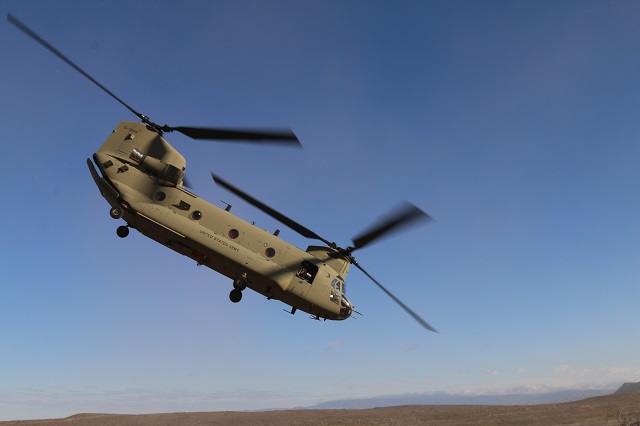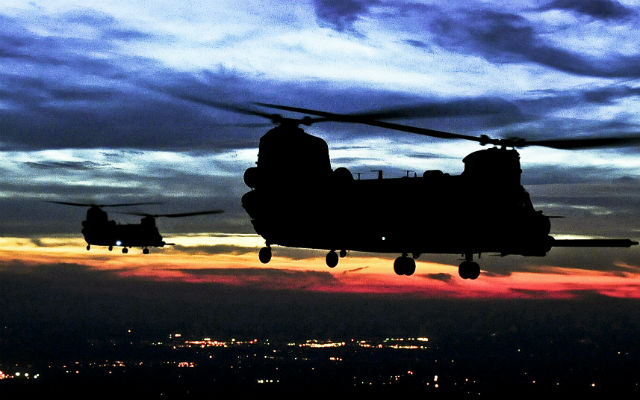Boeing is pressing forward with advanced Chinook rotor blade (ACRB) construction at its Philadelphia-based composites plant as it prepares for prototype flight demonstrations later this year on a CH-47 tethered to the ground.
The company builds and repairs Chinook blades at the same facility where it fabricates composite fuselage panels for the Bell-Boeing V-22 Osprey. Several of the new swept-tip blades for the tandem-rotor Chinook are under already construction there for scientific examination and eventually flight testing.
Speaking to Flightglobal at the adjacent CH-47F Chinook plant in Philadelphia, Pennsylvania last week, director of Boeing cargo helicopters business development Randy Rotte said the new forward and aft blades are only prototypes at this point, designed to reduce risk ahead of an upcoming full-scale development effort. Production versions could enter assembly in 2018.
Designed to provide 900kg (2,000lb) of additional lift, the new blades are one of many new features on the Block II Chinook that will begin low-rate production in the 2021 timeframe.
“Developmentally, the biggest event in 2016 is we’re going to fly the first test flights,” says Rotte. “We’ve done all the wind tunnel tests, we’ve built blades. The wind tunnel says we’ll get [the extra lift] and now it’s our chance to put it on an actual aircraft and flight test it in tethered hover and other tests to make sure, before we get too far down the road, that it’s going to do what we want it to do.”

US Army
The US Army will place its final CH-47F order of its second multi-year Chinook production contract in fiscal year 2017, before slowing production ahead of Block II's introduction.
The new version is essentially a collection of engineering change proposals that included new blades and an improved drive train (IDT), as well as different software and components to establish a more common baseline configuration between the regular army and special operations Chinooks. It will be re-rated to 24.5t (54,000lb) maximum gross weight, like the Canadian CH-147F.
Rotte says Boeing is responding to a request for proposal (RFP) issued by the army in January ahead of the programme’s formal entry into development. A “milestone B” decision that will graduate Chinook Block II to programme-of-record status is due in May, according to the army’s fiscal year 2017 budget submission.
“Block II is going after payload, commonality and reduced operations and maintenance costs,” Rotte explains. “Prior to milestone B, we want to fly the [advanced rotor] blade basically to prove its technology readiness level. The other components are already at a high enough technology readiness level that we can begin moving into the engineering and manufacturing development phase.
“The rest of the flight tests will happen out in 2019 and 2020 as we build the first actual Block II aircraft, where we’ve put in the improved drive train and ACRB, and then it will be a full flight test.”

US Army Special Operations Command MH-47s
US Army
The army’s five-year spending proposal, released on 9 February, increases research and development spending on the Chinook by 21% to $313 million in fiscal years 2017-2020 compared to last year’s budget blueprint. However, CH-47F procurement has been trimmed by seven aircraft and $153 million through 2020, before production scales up again with 14 Chinook Block IIs ordered in 2021.
Last year, India became the 19th Chinook customer with an order for 15 aircraft and Turkey also intends to grow its fleet. Rotte expects “at least” one new international customer in 2016 and one repeat order. Boeing delivered 57 Chinooks in 2015 and is planning to finish assembly of 49 this year.
Source: FlightGlobal.com























